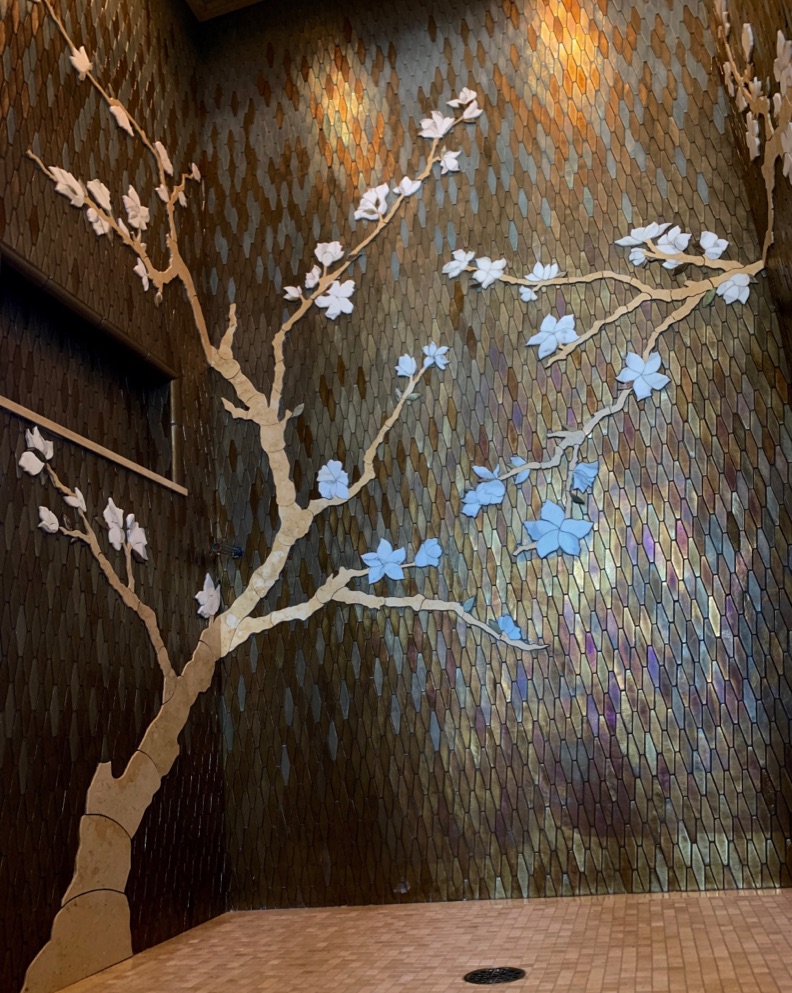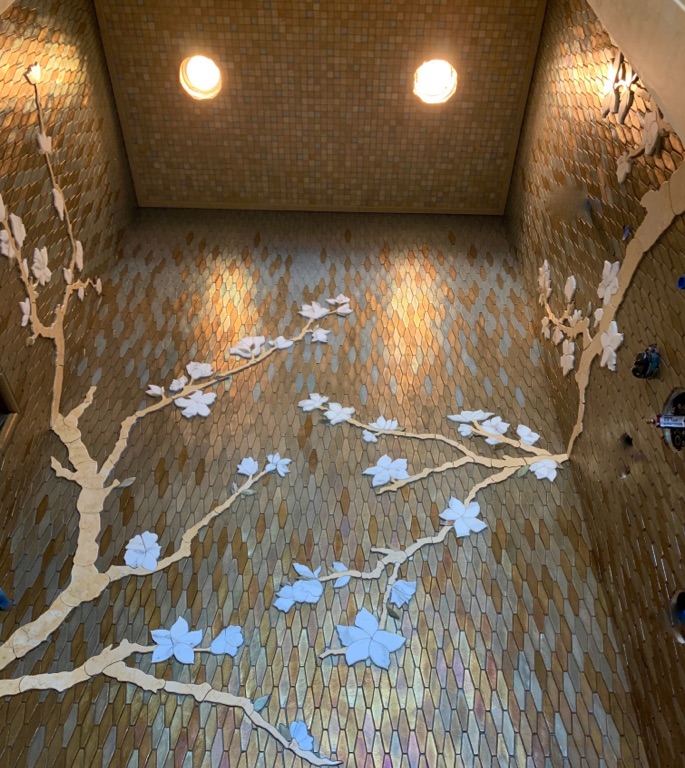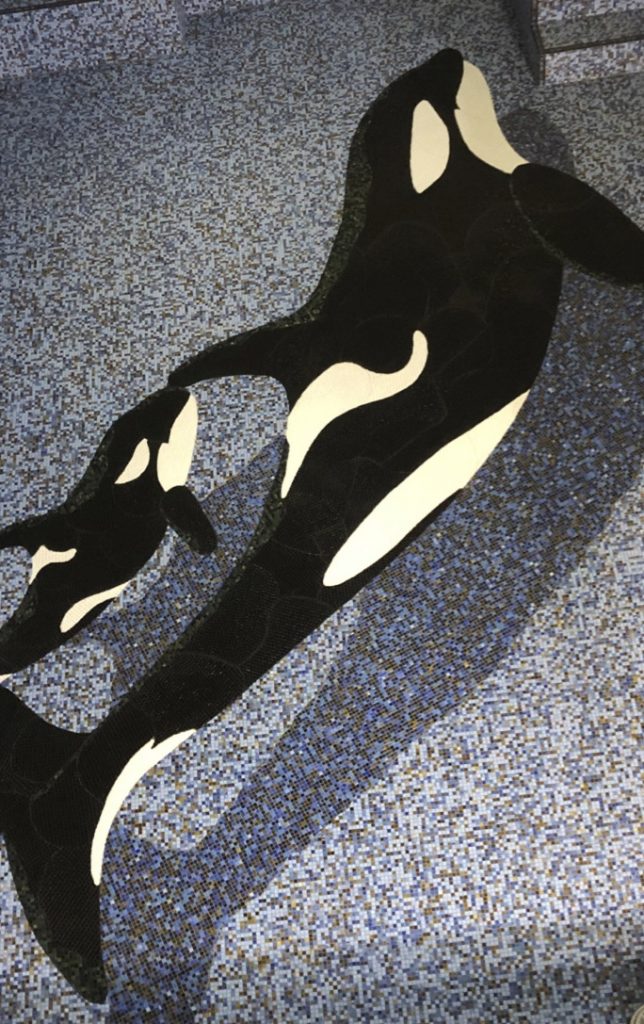In our March issue, NTCA Executive Director Bart Bettiga interviewed Lee Callewaert of Dragonfly Tile & Stone Works in Grafton, Wis., and Joshua Nordstrom from Tierra Tile in Homer, Alaska, for his One-to-One story.
Amidst all the wisdom shared by these stellar artisans was some advice on recruiting young people into the trade, and how to emphasize the artistic aspects of tile setting to attract creative young people interested in making enduring art with their work. Here are Callewaert’s and Nordstrom’s suggestions and observations. – Lesley Goddin, Editor
Bettiga: What advice would you give to small business owners on how to recruit young people into the trade and encourage them to come work for them? On that same note, you are both artists. How can we reach out to people with an artistic background to make them aware of the opportunities in our industry and what tools should we develop to tell that story?


Callewaert: I think it’s about your mindset. I think of our trade as an artisan craft and project that in my work and in my discussions with customers, suppliers, trade partners, fellow installers, and potential employees. We need to lose the “Tile Guy” perception/image and regain the historic reputation as artisans and craftspeople. The more we project the professionalism of our craft and its place as an artisan trade, the more we will attract young workers. And I see every well-executed and detail-oriented installation as “art.” It doesn’t need to be the large artistic mosaic or cut stone features. I teach my apprentices the importance of every detail and the visual impact it has on any installation.
When we talk about the skills and attributes we are looking for in an employee, artistic sensibility and background are always highlighted as preferred. Young people don’t just want “work.” They want to feel like they are part of something important and stimulating. Our employees have come to us through various channels but usually because they have heard about the quality of our work and that we do “cool stuff.” One simply responded to an ad after browsing our website. He has artistic skills and was drawn to that aspect of our work. Another heard about us from a trade partner we have worked with. She started her college career in art studies but wasn’t sure where she wanted to take that. This trade partner recognized a potential fit, sent her to our website, and introduced her to us. But in all cases, none were just looking for a “job.” They were attracted because of our reputation and the artistic nature of our work, and yes, the “cool factor.”
Maybe we need a campaign to “Make Tile Work Cool Again?” We will be adding this hashtag to our social media posts: #youngartisticskillsneededinthetrades!
We should continue to reach out to high schools, trade schools, art schools, and other organizations where young people are considering their career options. Maybe there could be a presentation template that any of us could use to present to these audiences. Maybe some tips on how to approach them. Incentivizing our younger employees to conduct these orientations or work the job fairs is one idea. They are fresh and new and can relate to the audience. It’s the time and organization that might make this more difficult.
Nordstrom: I have little advice to offer of how small businesses can recruit young people into the trade to come and work for them. I can say with the qualified knowledge of being a tile installer, this is a trade that can be taken with you wherever you choose to be in life and not have a problem finding work. You can make as much or even more in some cases than your college-bound friends, have the freedom of choosing your own schedule, who to work for, and not have the burden of paying off a college loan.
With or without an artistic background, there are ample opportunities for every job to add something creative. I find that people are always willing to pay a little extra for something that they might not know exists especially if you can make it personal to them and their tastes. We all work every day with a broad palette of textures and colors. You can experiment with a variety of colors or just stay with one and accentuate the grout lines for a tone-on-tone effect. You need to be willing to step out of the square grid of grout lines to push your limits and challenge yourself.
It’s also useful to be observant of current trends and colors, what kinds of things your client seems to collect or be into, their color schemes, and be aware of what the water-jet guys are producing. People will pay more for something that they can have a part of creating, knowing that it was hand made by an artist. If you are capable of cutting a radius, then the sky is the limit. I found myself starting out cutting stained glass designs. These come already patterned out and just need to be blown up to size. They come in many different varieties.
Adding artistry into the skill set of being a tile setter will set you apart from your competitors and further your chances of being a successful tile contractor.












